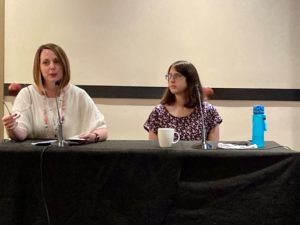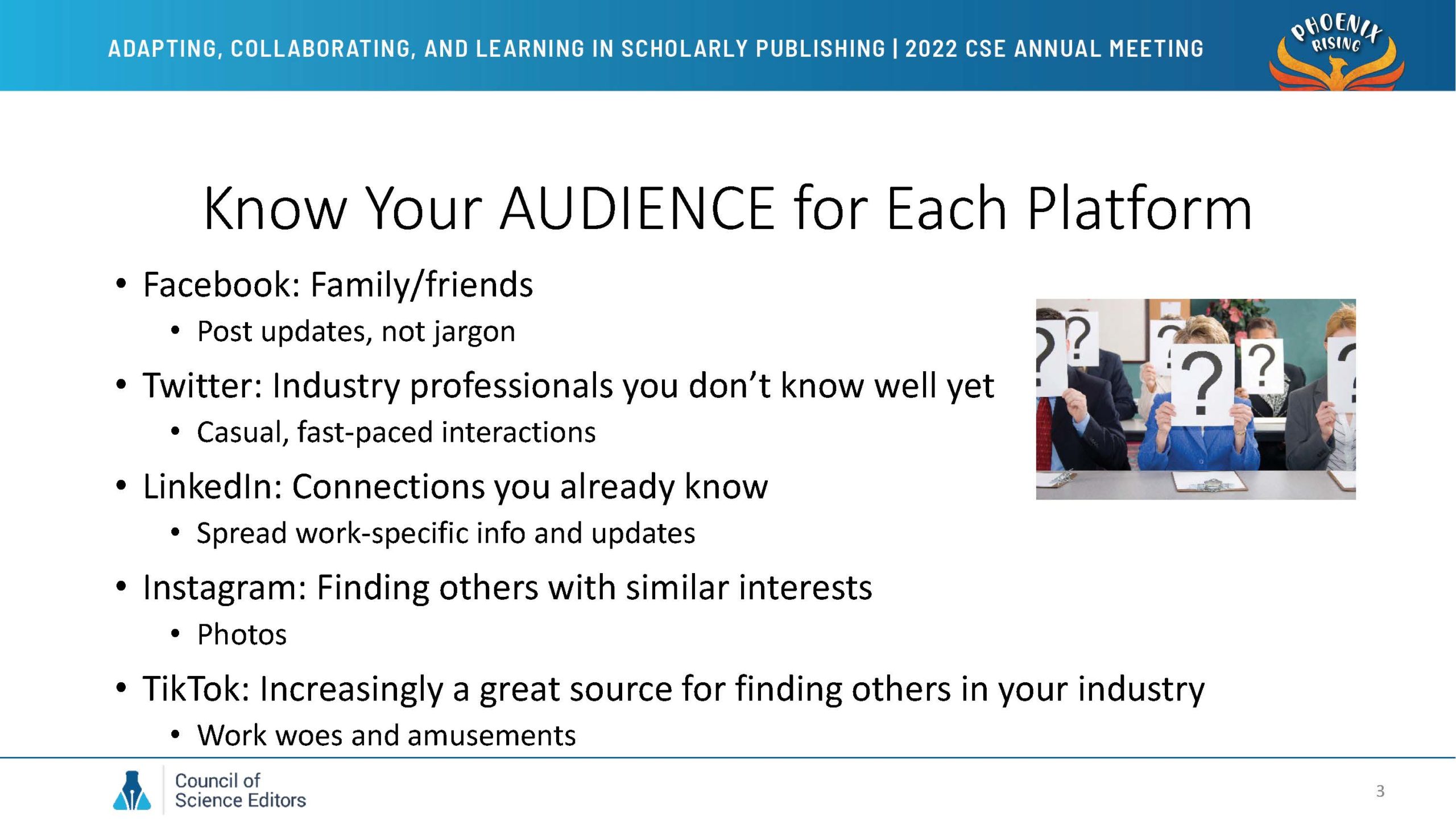MODERATOR:
Jennifer A Regala
Director of Publications/Executive Editor
American Urological Association
Linthicum, Maryland
@JenniferARegala
SPEAKERS:
Heather DiAngelis
Associate Director of Publications
Transportation Research Board: National Academies of Science, Engineering, and Medicine
Washington, DC
@hdiangelis
Dana Compton
Managing Director and Publisher
American Society of Civil Engineering
Reston, Virginia
@danamcompton
Angela D Cochran
Vice President, Publishing
American Society of Clinical Oncology
Alexandria, Virginia
@acochran12733
Jennifer A Regala
REPORTER:
Becky Fargen
Journal Manager
Elsevier
 Social media can be a useful tool for professionals to develop connections, build an audience, and promote their company’s publications, but it can be daunting to get started. This session discussed helpful dos, don’ts, examples, and case studies of using social media for science editors.
Social media can be a useful tool for professionals to develop connections, build an audience, and promote their company’s publications, but it can be daunting to get started. This session discussed helpful dos, don’ts, examples, and case studies of using social media for science editors.
To start, Heather DiAngelis gave a handy list of dos and don’ts of using social media as a platform for your organization. The takeaways were: DO choose a platform you can do well on, know your audience, be relatable, interact with others, and consider the timing; DON’T bash your colleagues, be disrespectful, bore people, or send unsolicited messages asking for their time or money. Knowing your audience was a key theme that was repeated in this talk. For example, Facebook might be better suited for only family and friends, whereas LinkedIn is tailored more for professional use. However, it is OK to occasionally tweet an amusing tidbit about a work woe that others can relate to or a funny story that happened at work—without bashing your coworkers or being overly negative.
In addition to knowing your audience, viewing social media as two-way was also a recurring theme: Liking, commenting, following, and messaging others will enhance your social media experience and help you/your organization get more use out of it. You cannot expect others to come to you without interacting with them.
Since DiAngelis’s dos and don’ts list was so informative, Dana Compton decided to focus on presenting some case studies. As an example of the tip of knowing your audience, she talked about the American Society of Civil Engineering’s (ASCE’s) experience of using Twitter, LinkedIn, and Instagram only to discover that the Instagram site was mostly popular with photographers. Since that was not the target audience, they closed the Instagram account and focused on their Twitter and LinkedIn pages to promote different publications and conferences.
Compton also discussed using social media for cross-divisional cooperation. This includes liking or retweeting posts from other departments, for example, retweeting a technical institute that promoted an ASCE journal, or favoriting an ASCE government relations post. ASCE is also focusing on a visual approach, including a monthly infographic connected to a related journal collection. These visual social media posts are sometimes retweeted, liked, or shared by other departments or Board members, which can add to the promotion.
Next, Jennifer Regala gave some tips and examples of successfully using social media. “Your social media skill level doesn’t matter”; instead, she recommends thinking about how to connect your message, understanding your organizational needs, and thinking about how your publications fit into that. Regala also gave some dos and don’ts: do be organic and fluid, do be engaging, do be simple, and do use visuals (including emojis!), but don’t be all over the place and don’t be rude. “If it’s a bad day, put your phone away.” You can also find social media experts in your community, and don’t be afraid to ask for help. The point is to have an article live on.
Some fun examples at the American Urological Association (AUA) include live-tweeting about the “swag” from the first-ever publications booth. Next year, the publications booth plans to include a Pet of the Month calendar featuring editorial board members’ pets. The AUA also posts visual abstracts, usually reaching tens of thousands of people. Sometimes this can include a Throwback Thursday post with an in-house graphic of an old article. The Online Content Editors, who provide strategic social media thought leadership to the AUA’s society publications, are a big help to the AUA.
The final speaker, Angela Cochran, gave some quick tips for using social media in scholarly publishing. Some handy tools are Symplr, which shows influencers of specific hashtags, and Altmetric, which shows who and what is trending. These can help find social media influencers to follow or engage with. Google News Alert can also help find interesting things to highlight. For example, the Los Angeles Times’ High School Insider recently covered a JCO Global Oncology article. Cochran gave a good recommendation not to engage in social media when tired or cranky—for her, this is after 3 p.m. on Fridays. As DiAngelis pointed out afterward, “What you say can alter someone’s perception of you.”
Several questions were brought up in the Q&A. Some topics included who should have access to the social media logins at a workplace, having a consistent voice, and community engagement. One audience member shared a story that her husband Facebook-friended some colleagues only to have to fire one of them shortly after. This led to the decision to not have any coworkers on Facebook, which ties back to knowing your audience.

